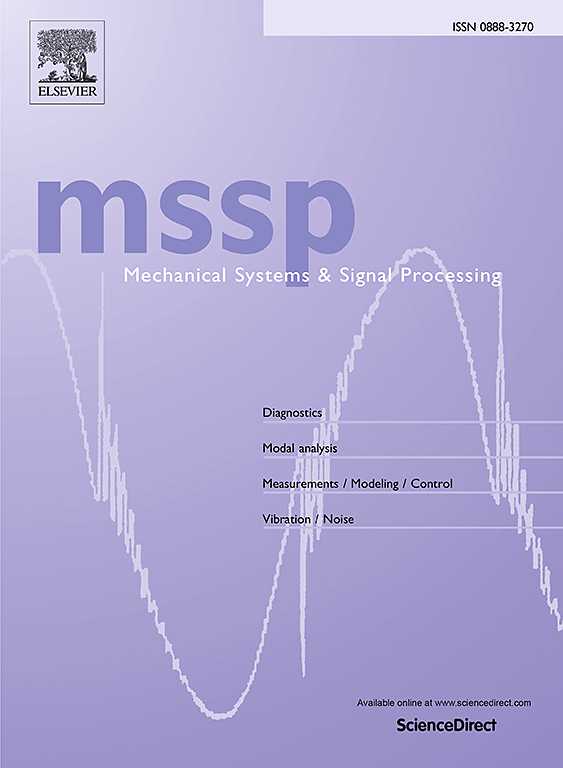Joint load-parameter-response identification using a physics-encoded neural network
IF 7.9
1区 工程技术
Q1 ENGINEERING, MECHANICAL
引用次数: 0
Abstract
The joint identification of the input-parameter-output from sparse measurements is essential to evaluate the safety condition of civil infrastructures. Existing physics-based methods require that the loading locations and covariances of process and observation noises are available. In contrast, pure data-driven approaches are limited in their generalization ability and interpretability. To address these issues, a physics-data-driven method is proposed for joint load-parameter-response identification. It consists of a data-driven and two physics-based modules. The former is a convolutional residual autoencoder (RAE) for load identification. In the physical modules, the finite element method is used for model updating, and the Newmark-beta algorithm is embedded to solve the structural dynamics. They are encoded into a deep learning architecture to realize the forward response calculation and backward system identification. Subsequently, the difference between the predicted and measured responses is formulated as the loss function, by minimizing which the RAE is trained, and the structural parameters are identified simultaneously. In such a process, structural property and load time history are learned in a novel self-supervised manner using output data only. The proposed method is finally applied to a numerical two-span beam and a laboratory-tested cantilever beam. Results show that the proposed approach can identify the structural load, parameters, damage, and responses accurately. The effect of observation noise, sensor placement, and load conditions on the identification results are discussed.
求助全文
约1分钟内获得全文
求助全文
来源期刊

Mechanical Systems and Signal Processing
工程技术-工程:机械
CiteScore
14.80
自引率
13.10%
发文量
1183
审稿时长
5.4 months
期刊介绍:
Journal Name: Mechanical Systems and Signal Processing (MSSP)
Interdisciplinary Focus:
Mechanical, Aerospace, and Civil Engineering
Purpose:Reporting scientific advancements of the highest quality
Arising from new techniques in sensing, instrumentation, signal processing, modelling, and control of dynamic systems
 求助内容:
求助内容: 应助结果提醒方式:
应助结果提醒方式:


